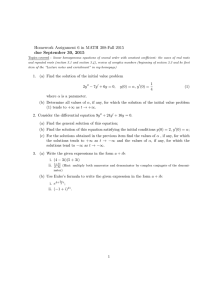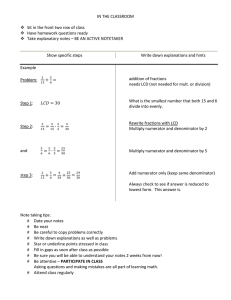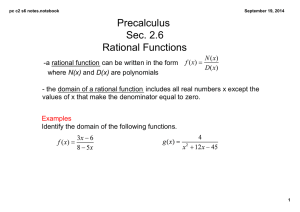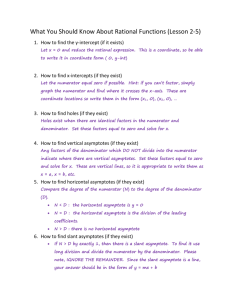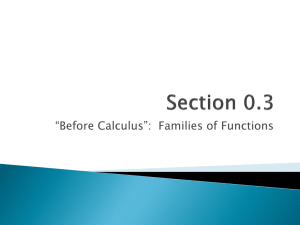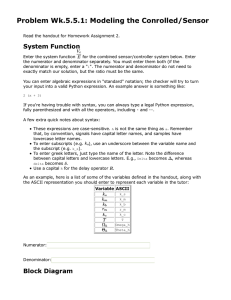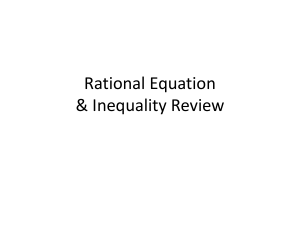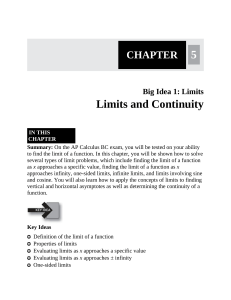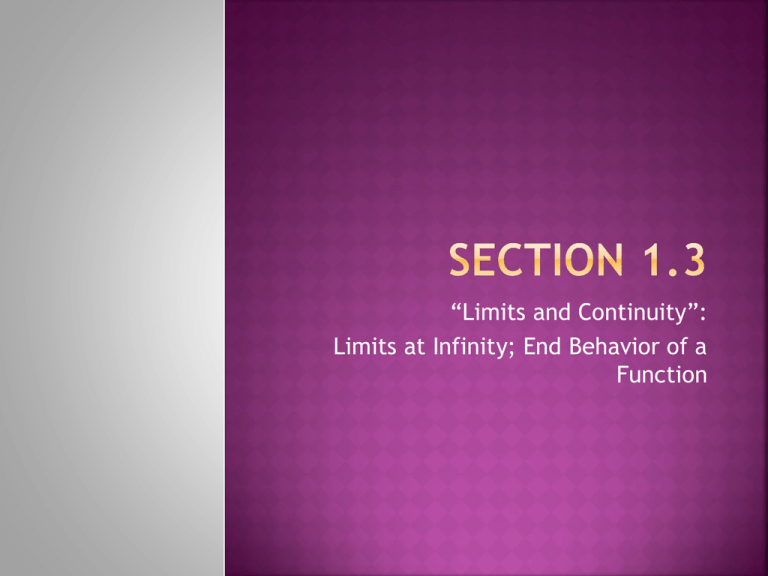
“Limits and Continuity”:
Limits at Infinity; End Behavior of a
Function
Calculus,10/E
by Howard Anton, Irl Bivens,
and Stephen Davis
Copyright © 2009 by John Wiley & Sons, Inc.
All rights reserved.
We discussed infinite limits briefly on slides 12 & 13 in
section 1.3.
We will now expand our look at situations when the value
of x increases or decreases without bound (“end
behavior”) and as a function approaches a horizontal
asymptote.
Below is a picture of a function with a horizontal
asymptote and a related limit.
The further you follow the
graph to the right, the closer
y values get to the asymptote.
That is why the limit is L.
The end behavior of a polynomial matches the end
behavior of its highest degree term.
From the Lead Coefficient Test (+1) and the degree
(odd), we know that the end behavior of y= x3 is
down up, therefore, the same must be true for y = x312x2+48x-63 which is g(x)=(x-4)3+1 in graphing form.
The graph of g(x) on the right
does fall to the left and rise to the
right, just as end behavior predicts.
One technique for determining the end behavior
of a rational function is to divide each term in
the numerator and denominator by the highest
power of x that occurs in the denominator, then
follow methods we already know.
Example:
Please
read examples 9-11 in your book on
pages 94-95 and add your favorite one or the
one which you least understand to your
notes.
We will discuss them next class
So
1.
2.
3.
4.
5.
6.
7.
far:
Graph
Substitution
Simplify, then substitute
Multiply numerator and denominator by
conjugate of the denominator, then follow with
step 3.
Analyze end behavior - *NEW*
Divide each term in the numerator and
denominator by the highest power of x that
occurs in the denominator, then follow with
other steps. - *NEW*
More to come


